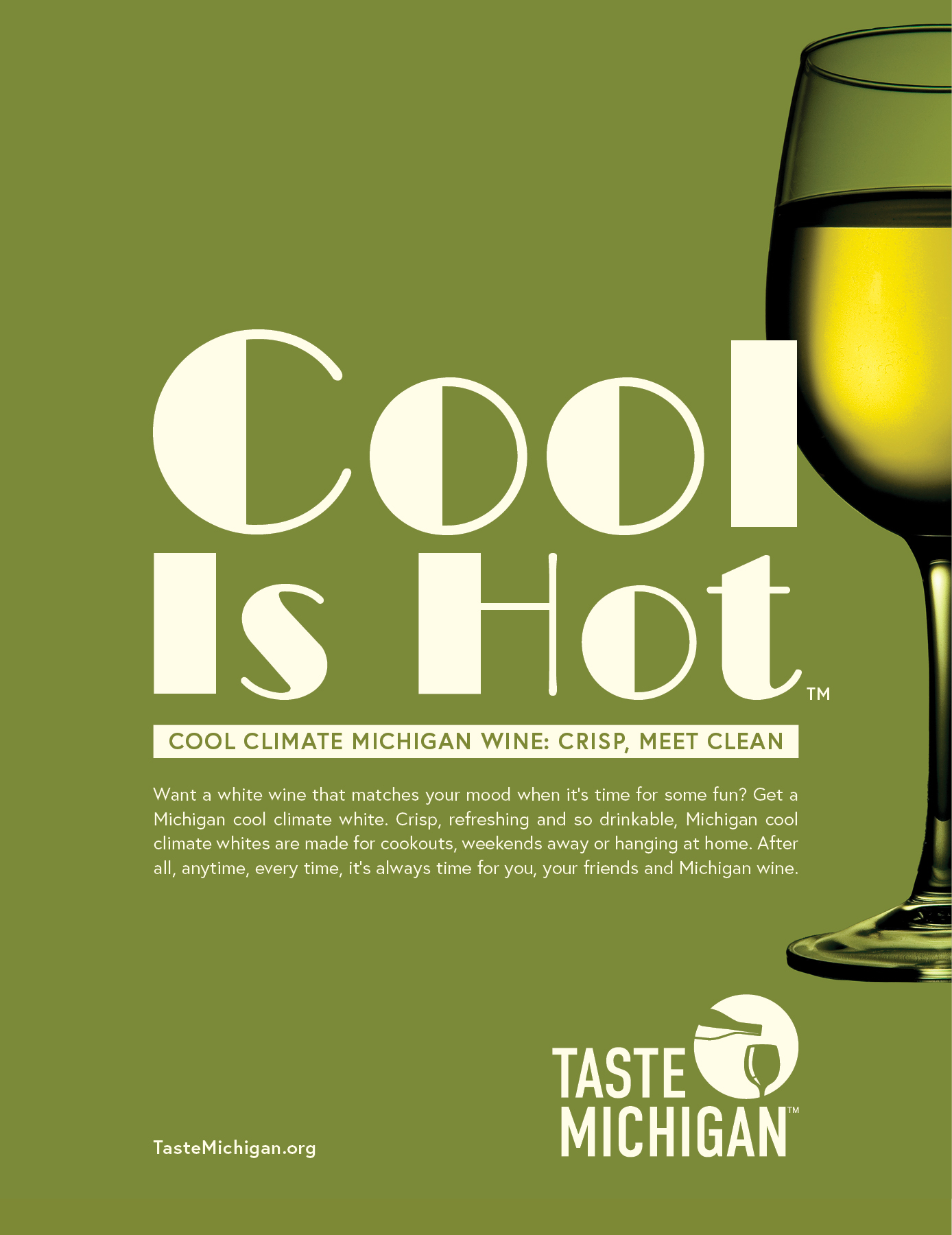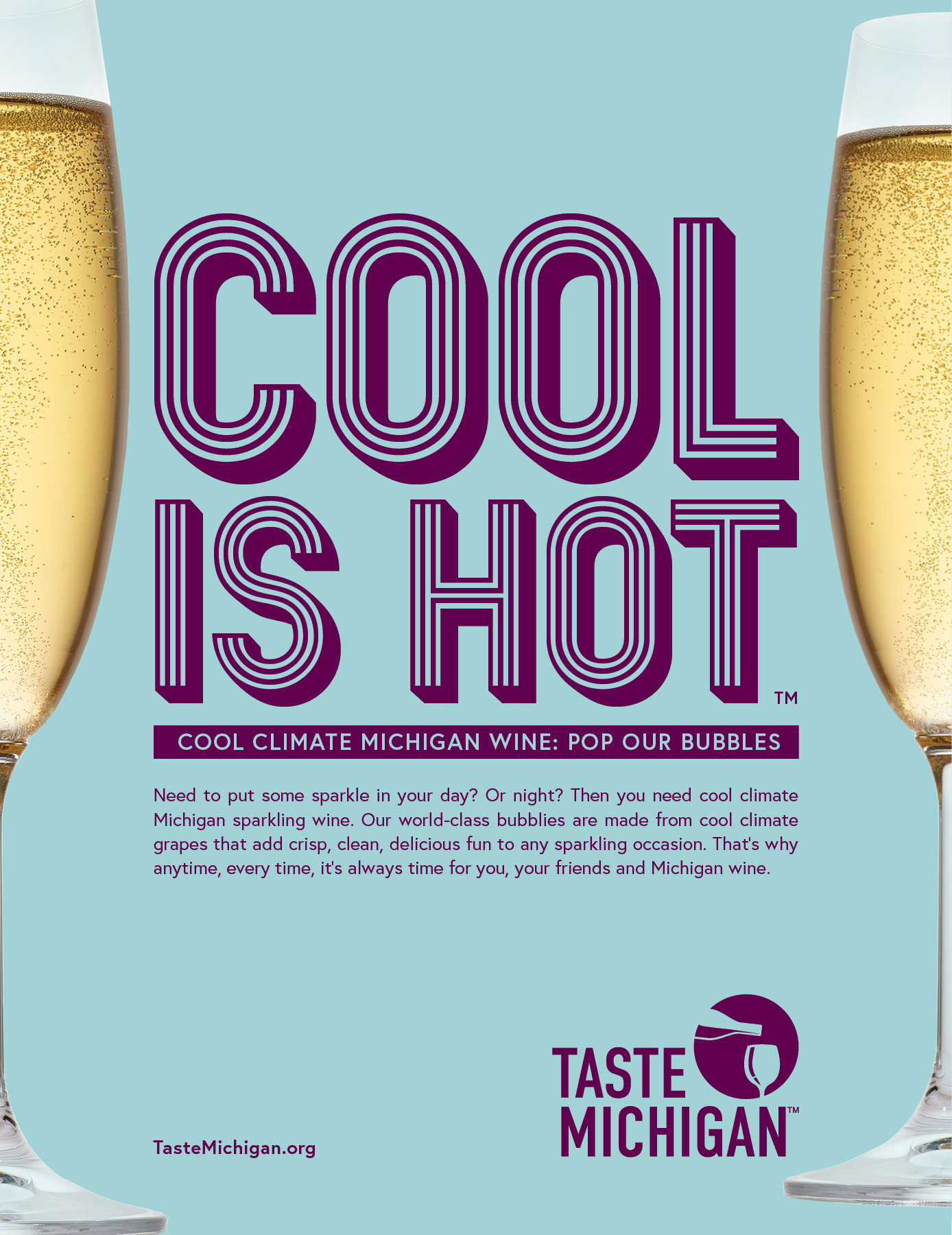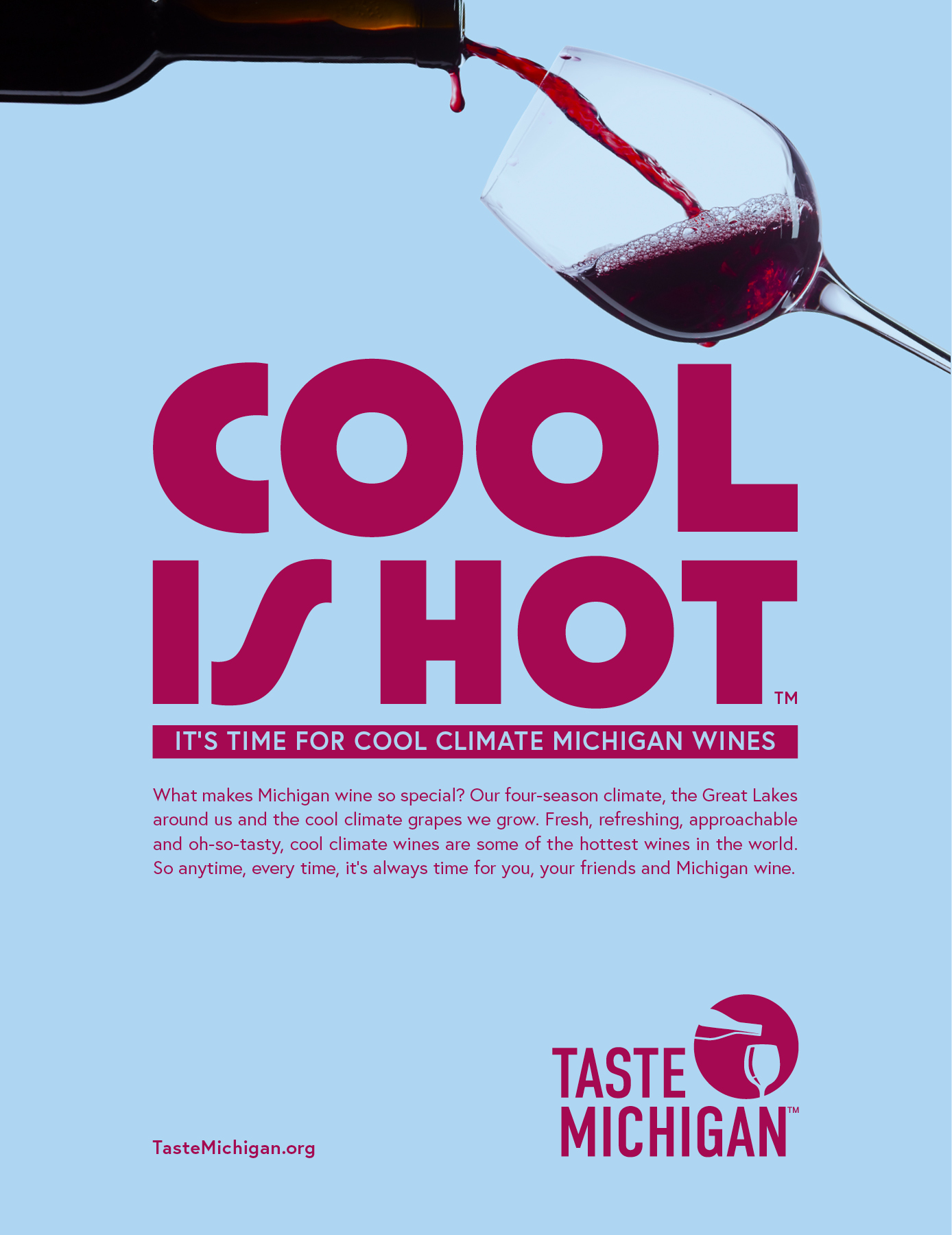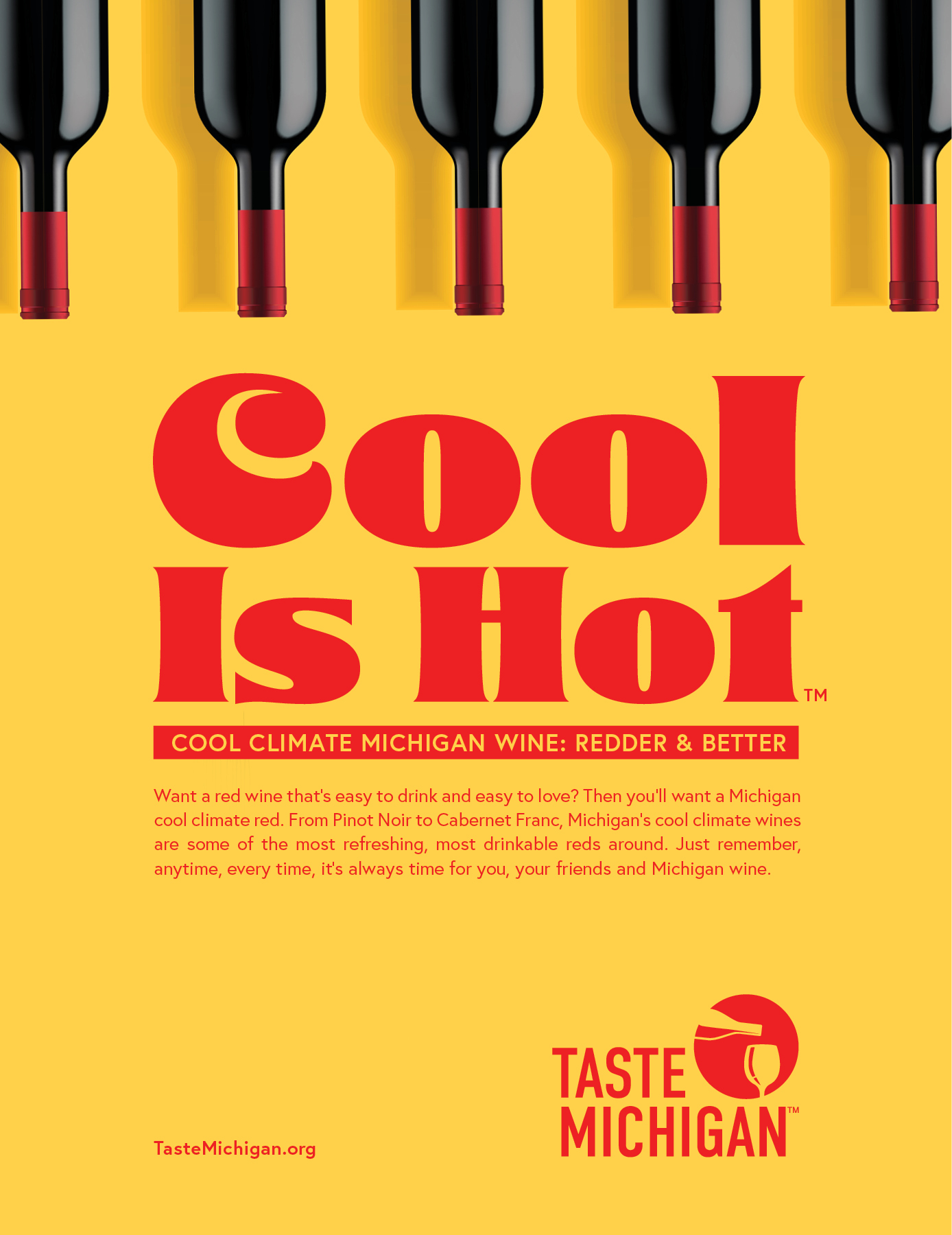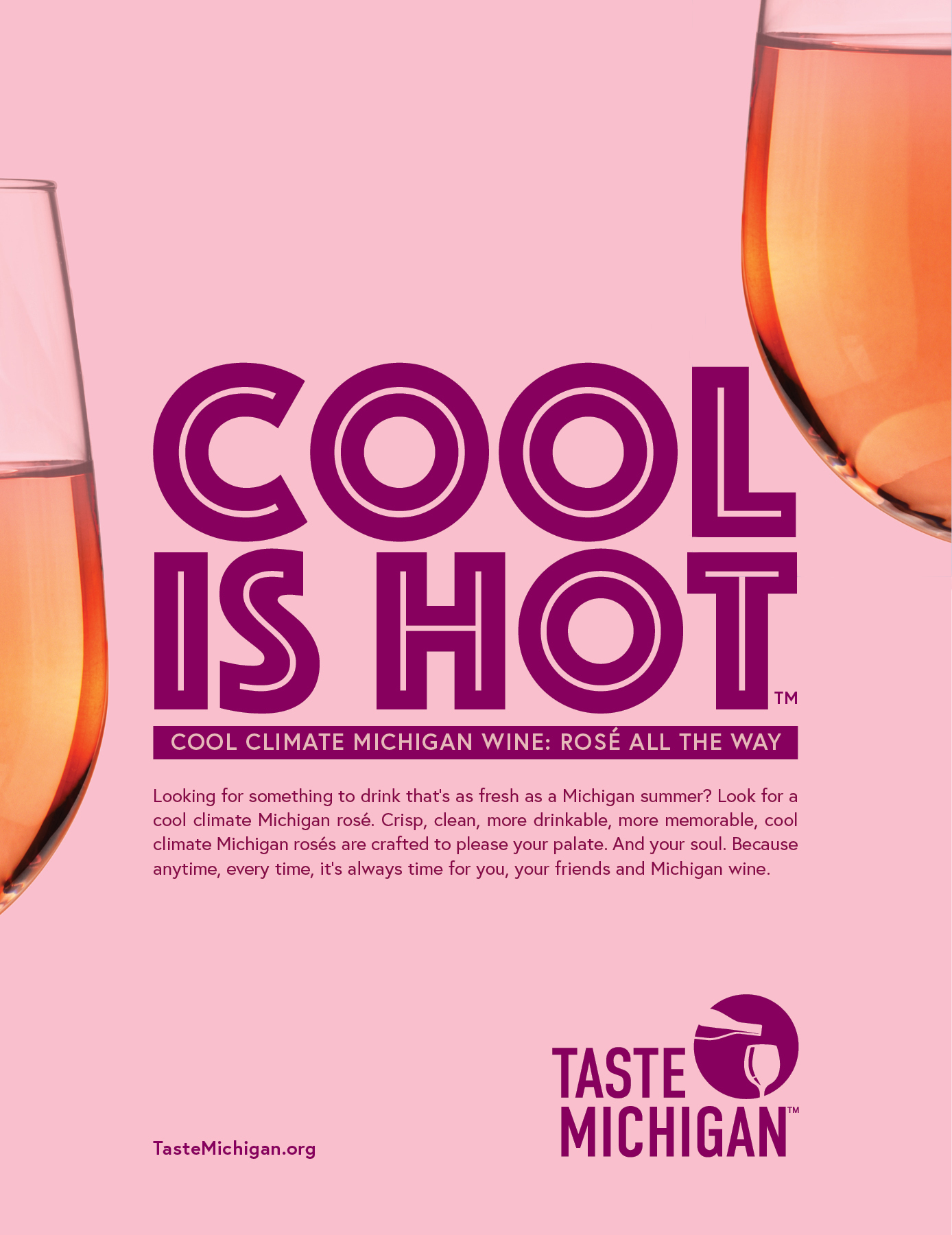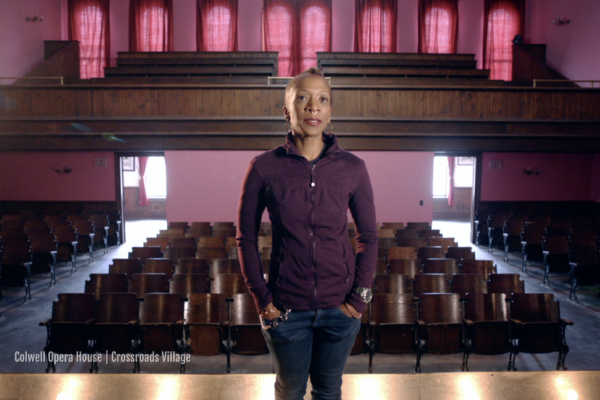Cool Is Hot Campaign
At Factory, we like Michigan. A lot.
We also like wine. Also a lot.
Put the two together and you have a dream assignment for the Factory team.
There’s this nonprofit organization called the Michigan Wine Collaborative. It’s made up of professionals in our state’s wine industry … growers, winery owners, winemakers, researchers, government officials, educators, marketing folks and more.
Their mission is 100% wine focused: “To enhance the sustainability and profitability of the Michigan wine industry by supporting wineries, growers and other businesses and individuals connected to the industry – today and for future generations.”
We like that. Also a lot.
Why?
Well, we love us some Michigan beer and we love us some Michigan liquor. But Michigan wine is in many ways the heart of this state. Wine is an important chunk of our agriculture economy. The grapes are grown here. The wine is made here. There are some 150 wineries across the state – about half of all counties have at least one. And those Michigan wineries – and our several wine country regions – are essential pieces of the state’s tourism economy.
Michigan without Michigan wine is … to be honest, unimaginable.
So when the Michigan Wine Collaborative put out an RFP a while back for an ad agency to help craft a brand and marketing campaign to support the sales of Michigan wine, we were all over it. They hired us. And we went to work.
Job one: Create the brand.
Last fall we launched the Taste Michigan brand. New name, new logo, new website, bunch of marketing materials. You can read all about it here and here.
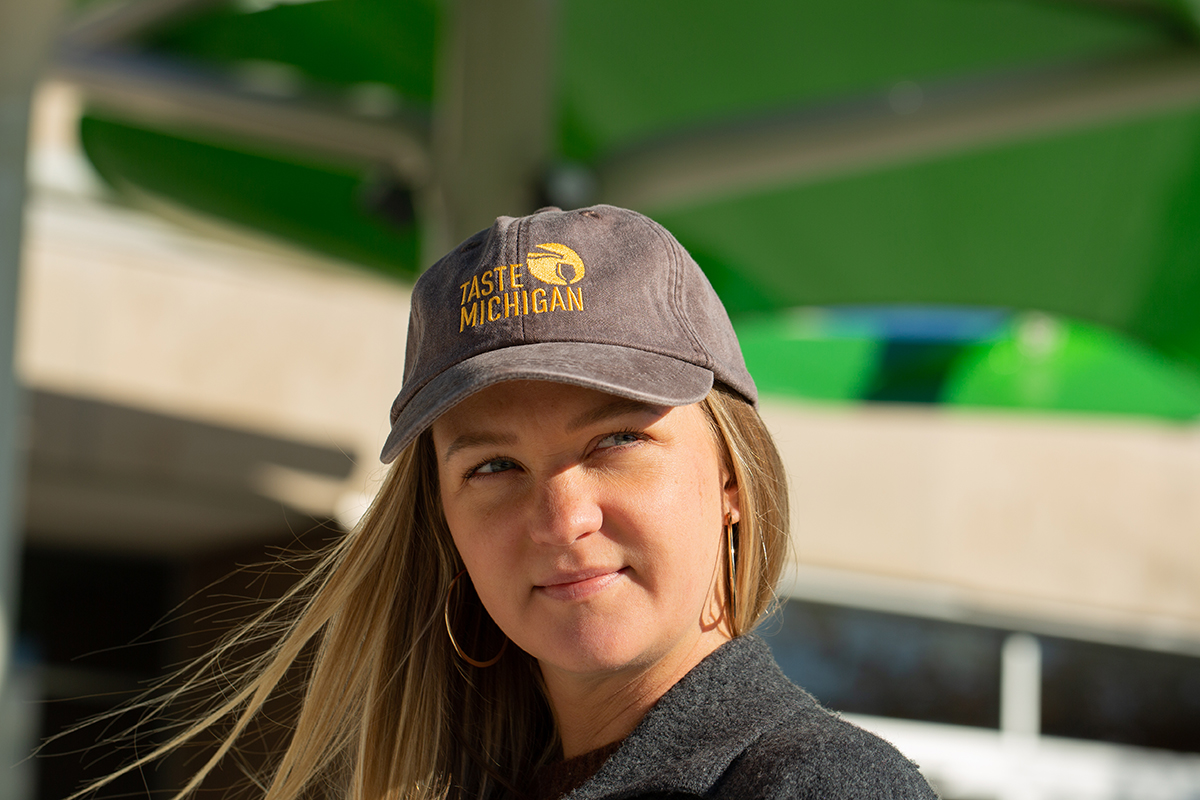
Here’s Factory’s Shana Preuett modeling our nifty Taste Michigan cap.
Job two: Create the marketing campaign.
Now, the place to pivot could easily be something very Pure Michigan-y. Beautiful photography of vineyards, wineries, tasting rooms, attractive people enjoying wine, each other and the moment. There’s nothing wrong with that. Out of the 10 campaign ideas we presented (yes, 10), that was one of them. But in the end, it wasn’t the path we and the client walked down together.
What we wanted was not just to tell people something they already knew – Michigan wine is from Michigan – but to give them new news about why they should be drinking Michigan wine.
We spent time talking with industry professionals. We did some surveys. We analyzed 25 years of agricultural data about Michigan wine grape cultivation. And what it all added up to was three hugely important words:
“Cool climate wine.”
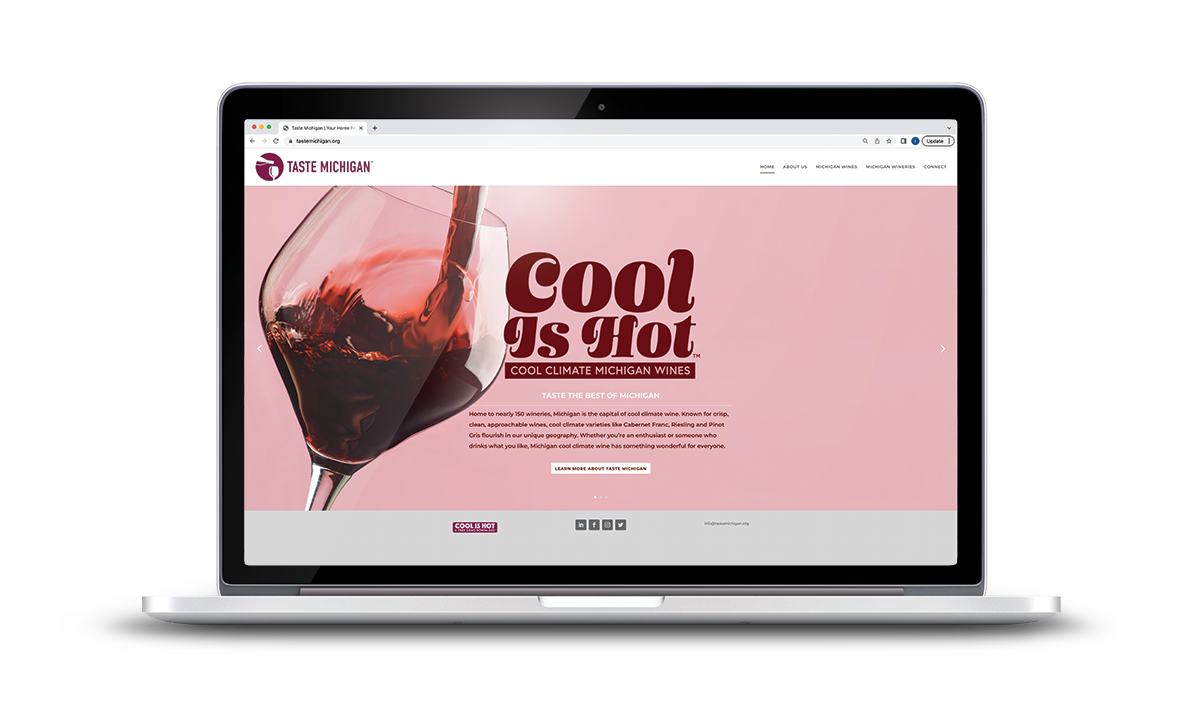
Some wine ABCs: Cool climate wines are made from cool climate grapes. And cool climate grapes are grapes that flourish in cooler climates (cooler that is than, say, hot and arid California wine country). The same cool climate grapes that flourish in France’s Loire Valley and in the hills, mountains and valleys of southern Germany and Austria thrive in Michigan’s Great Lakes geography and four-season calendar.
How important are cool climate grapes to Michigan’s wine industry?
Here are some facts: As of 2020, the top eight grape varieties grown here, by acreage, are cool climate grapes. Sixteen of the top 20 are cool climate grapes. Another two are what we think of as cool climate grapes’ first cousins, cold hardy grapes. Of the acreage dedicated to the top 20 wine varieties in Michigan, 92% is cool climate grapes.
And cool climate wines are growing in importance. Acreage dedicated to those top 8 Michigan wines (in order from #1 to #8, Riesling, Chardonnay, Pinot Gris, Pinot Noir, Cabernet Franc, Merlot, Vidal Blanc and Chambourcin) nearly tripled between 2000 and 2020 … from 694 acres to 2025.
If there’s a capital of cool climate wine in North America, there’s a very good argument it’s Michigan: This state has significant volume of production, a wide variety of grapes being cultivated, high quality of product and strong focus on cool climate wines.
And that matters for two reasons:
First, the wine industry nationwide is going through a bit of a crisis.
Younger drinkers (say, Millennials and Gen Z) aren’t taking to wine like younger drinkers used to. There’s a lot of competition for share of drinking that didn’t used to be there … hard this, alcoholic that, all kinds of different craft beers, canned cocktails and so on. And those younger drinkers don’t seem to be attracted to the same old same old wines their parents’ generation relied on. They’re not necessarily looking for old school snooty wines. The industry needs to give them options that are tasty, drinkable, fun … social wines, hanging-with-friends wines, girls-getaway wines, summer-on-the-lake wines, fire-up-the-grill wines, spend-the-weekend-in-wine-country wines, hang-out-on-the-porch wines.
Second, cool climate wines are those wines.
They tend to be crisper, cleaner, more approachable, more naturally flavorful and – this is important – lower in alcohol. They’re not the heavy, oaky bombs the younger drinkers are avoiding.
Fact is, cool climate wines have been enjoying a bit of a moment these past few years as wine enthusiasts, critics, wine writers, sommeliers and us regular folks discovered what a fantastic alternative they are to the same old same old. Cool climate wines are hot.
And that’s where the Cool Is Hot campaign for Taste Michigan came from: Because cool is in fact hot. And because that’s new news for a lot of people who would love these fresh, flavorful and fun wines … but don’t always know about them.
With a significant media expenditure concentrated around May’s Michigan Wine Month, the Cool Is Hot campaign includes radio, highway billboards, mobile billboards, digital display, print, video, social media and more.
We even made (with the help of our musical friend and collaborator, Shane Grush), our own Cool Is Hot dance track, which doubles as the music bed on our radio. You can listen to it here. And stream and/or download it just about anywhere quality music is streamed and/or downloaded.
Our creative goal for this campaign: Give the Michigan Wine Collaborative, all its members, the state’s wine and grape industry and the Taste Michigan brand a campaign every bit as fun, fresh and contemporary as the cool climate wines grown, harvested, crushed, aged, bottled and sold across this magnificent state we all call home.



















